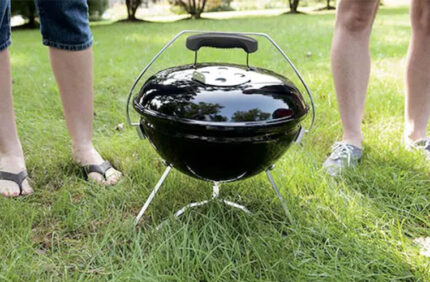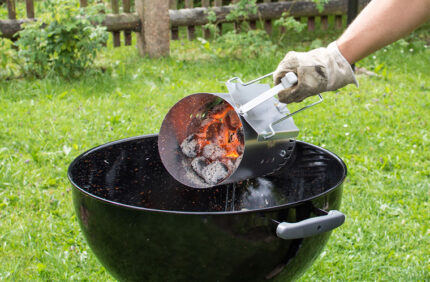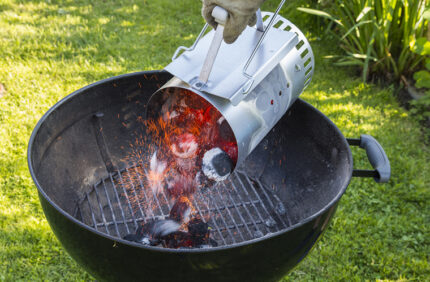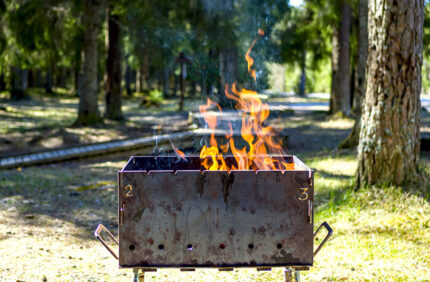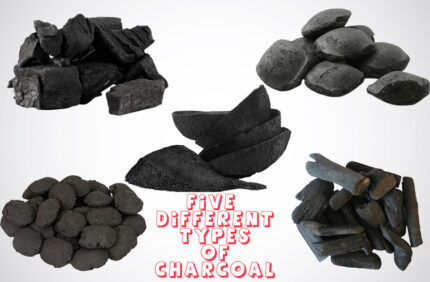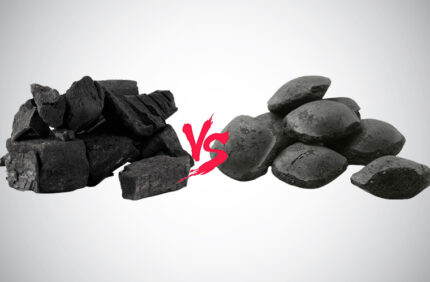In the culinary world, few things are as exciting as grilling with different types of charcoal. As a barbecue enthusiast, you should be able to relate to that special type of pleasure. It often comes with standing under the open sky and making a killer meal with nothing but a grill and some charcoal.
Now, some people prefer not to go the traditional way when using grills. Some find it a tad stressful having to manually monitor charcoals. But, the smoke flavor and scent that comes with using charcoal to grill your meal is too good to be passed up.
If you’ve been grilling for a while, you might have seen two fairly popular types of charcoal. But, what if we told you that there was more?
In this article, we’ll be exploring the different charcoal types you can find in the market.
The 5 Different Types of Charcoal
As it is today, five different materials can qualify as charcoal. Some are very old, and others are relatively new in the industry. Regardless, they’re all great in their unique way of grilling. They are:
1. Lump Charcoal
This is one of the popular ones we said you must’ve come across. It is made through carbonization, a process requiring a unique set of raw materials. This type of charcoal is considered one of the best in the industry.
Its carbonization process is often so effective that in the end, all you have left is carbon. That is, there’s hardly any organic matter left to ruin the quality of the lump charcoal.
Granted, this isn’t always the case. There’s usually a bit of disparity in the level of carbonization completion for bigger sizes of lump charcoal. That is, the wood used for lump charcoal doesn’t burn thoroughly. As such, there might be variations in the smoke flavor you’ll get in your meat. But, to some people, that’s actually a good thing.
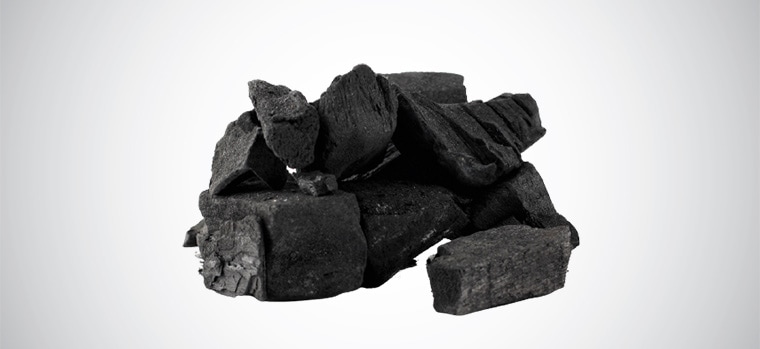
Due to its unique nature, this type of hardwood usually burns at very high temperatures. Much more than most charcoals. However, you should be careful because of the heat and speed of burning means:
- Your food could get burnt faster than you’d like.
- Your charcoal will burn out pretty quickly.
2. Charcoal Briquettes
This type of charcoal is much older than you think. Like gold, it reaches its best state after passing through fire. Like other forms of charcoal, it usually needs to burn in low-oxygen areas for several days before it comes out just right.
Charcoal briquettes are usually quite cheap. They can be purchased in huge quantities without necessarily leaving a dent in your wallet. Unlike lump charcoal, they tend to burn pretty slow and at much lower temperatures. For this reason, they’re perfect for your slow-roasting culinary escapades.
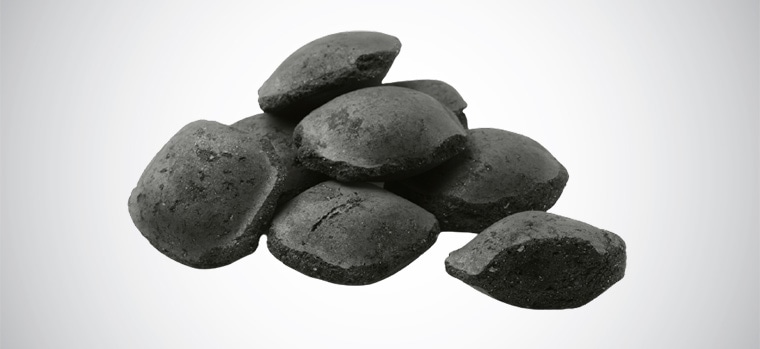
However, the lack of speed might become a disadvantage if you need to grill a lot in only a little time.
Some other forms of charcoal might be impossible to make. But the same doesn’t hold for charcoal briquettes. Granted, making it yourself can be a tedious and messy process. But, it is far from impossible.
3. Hardwood Briquettes
This type of charcoal is made of hardwood. However, producers don’t often leave it to take whatever form possible. Instead, they take proper care in ensuring they come out in the same shape and consistency.
This type of charcoal is often very dense. As such, heat passes through them much slower, and they don’t burn very quickly.
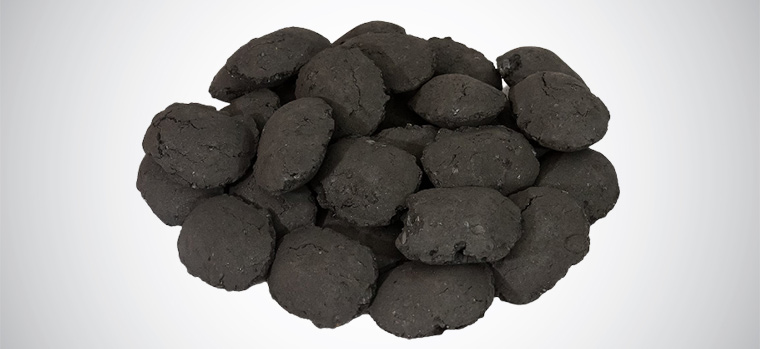
Due to the amount of effort required to create them, among other things, these charcoals can be a tad more expensive than others. Regardless, if you’re the type who grills very often, you might find it rewarding, despite the cost.
Due to their burning speed, they’re perfect for slow roasting requirements. For example, if you want to host or attend an all-day grilling program, it’ll work perfectly for you. This is because it wouldn’t burn your BBQ so quickly. So, you won’t have to check on it so often, sacrificing your socialization time.
4. Coconut Shell Charcoal
If there was any material you wouldn’t expect to be used for charcoals, it would be coconut shells. These things are often considered useless and tossed to the side. Especially, once the coconut is taken out, many people don’t bother about it anymore. However, it is an excellent material for making charcoals.
The exciting thing about them is that they don’t follow the usual procedure of burning. Instead of carbonization, this type of charcoal goes through distillation to be created. For that reason, it often burns much longer and stronger than regular charcoal.

The major downside is that it isn’t very common. This, of course, depends on where you are. Besides that, coconut shell charcoal doesn’t have any particular smell or aroma. But, it’s still an excellent tool for grilling.
5. Binchotan
If you thought coconut shell charcoal was uncommon, the chances are that you’ve never heard of this before. Binchotan is a special type of charcoal that has been around for several hundred years.
Naturally, other forms of charcoal take quite some time before they’re ready. But, this specific “species” can burn for several weeks nonstop before the final product comes out.
Traditionally, these charcoals are made from Japanese oak trees. Suppose you go outside of that specific demographic. In that case, you might be on your way to making an entirely different type of charcoal. But, that’s not the only thing that stands this charcoal out.
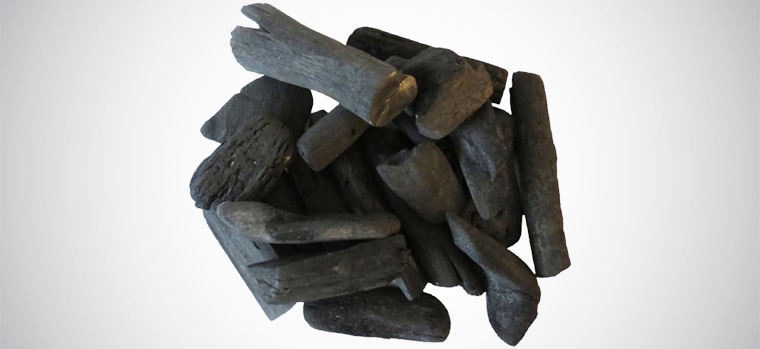
While other charcoal producers split wood to get the job done, Binchotan producers can use the tree branches. After getting the base material, they often proceed to burn the wood at very low temperatures for up to three weeks. This is pure to ensure consistency.
Naturally, you might not find this type of charcoal everywhere. However, it’s still fascinating to know of its existence.
Which is the Best Among them?
The answer to this question isn’t as straightforward as you might think. But, if you must know, the best type of charcoal for your needs depends entirely on what you need it for.
Lump charcoal, for example, will get your meal ready fast if you want speed. On the other hand, hardwood briquettes will help you burn slower, allowing time for other things. So, as we said, the best really depends on what you need.
To choose the right one for you, we’d advise to learn more about difference between the lump charcoal and briquettes. And consider your purpose as well as the charcoal cost.
In Conclusion
There are different types of charcoal in the market that’ll be useful to you in different ways. In this article, we’ve covered five of them. All that’s left now is for you to lay your hands on one and grill yourself a mouthwatering meal. Good luck, Grilliator!


